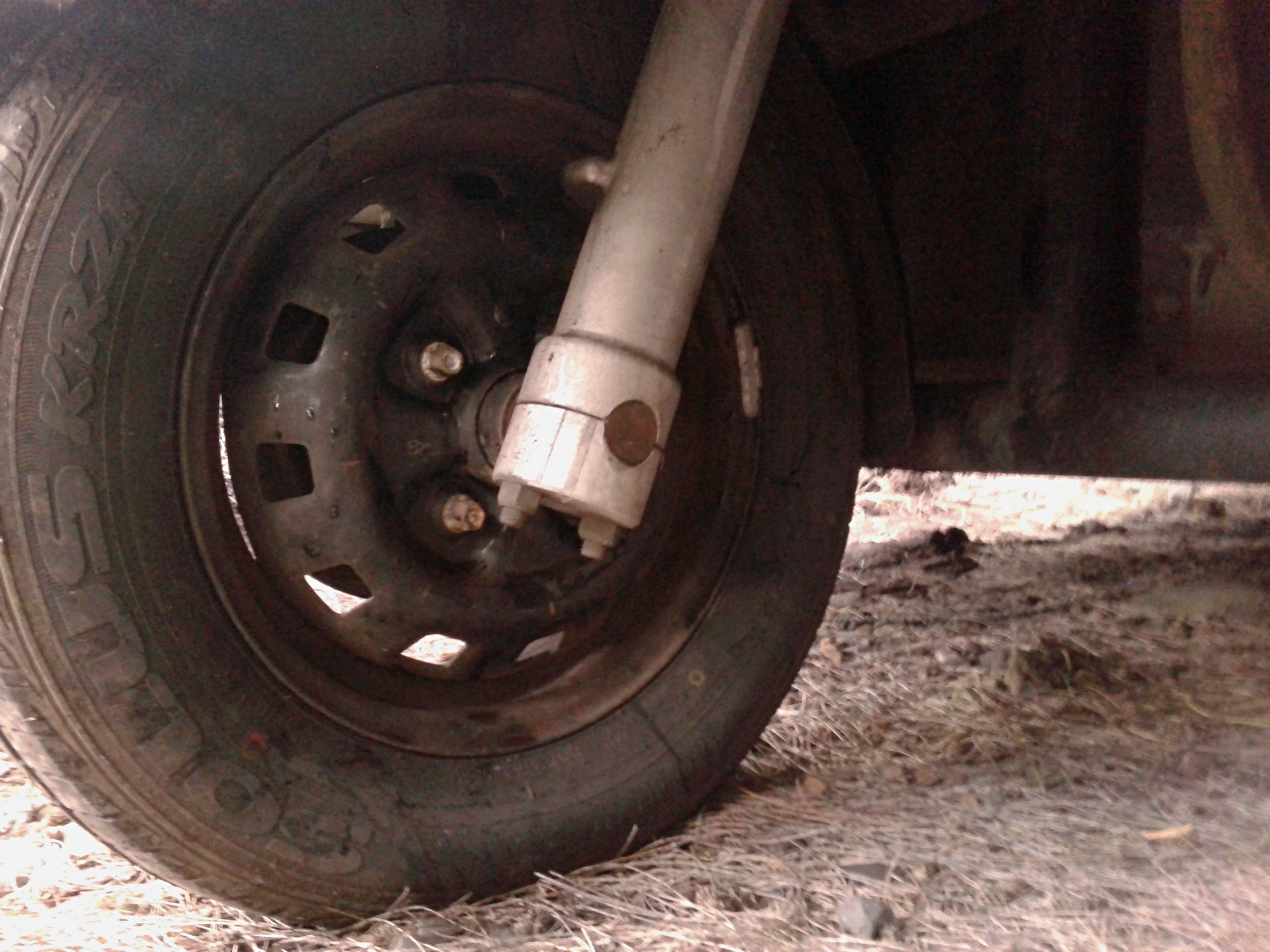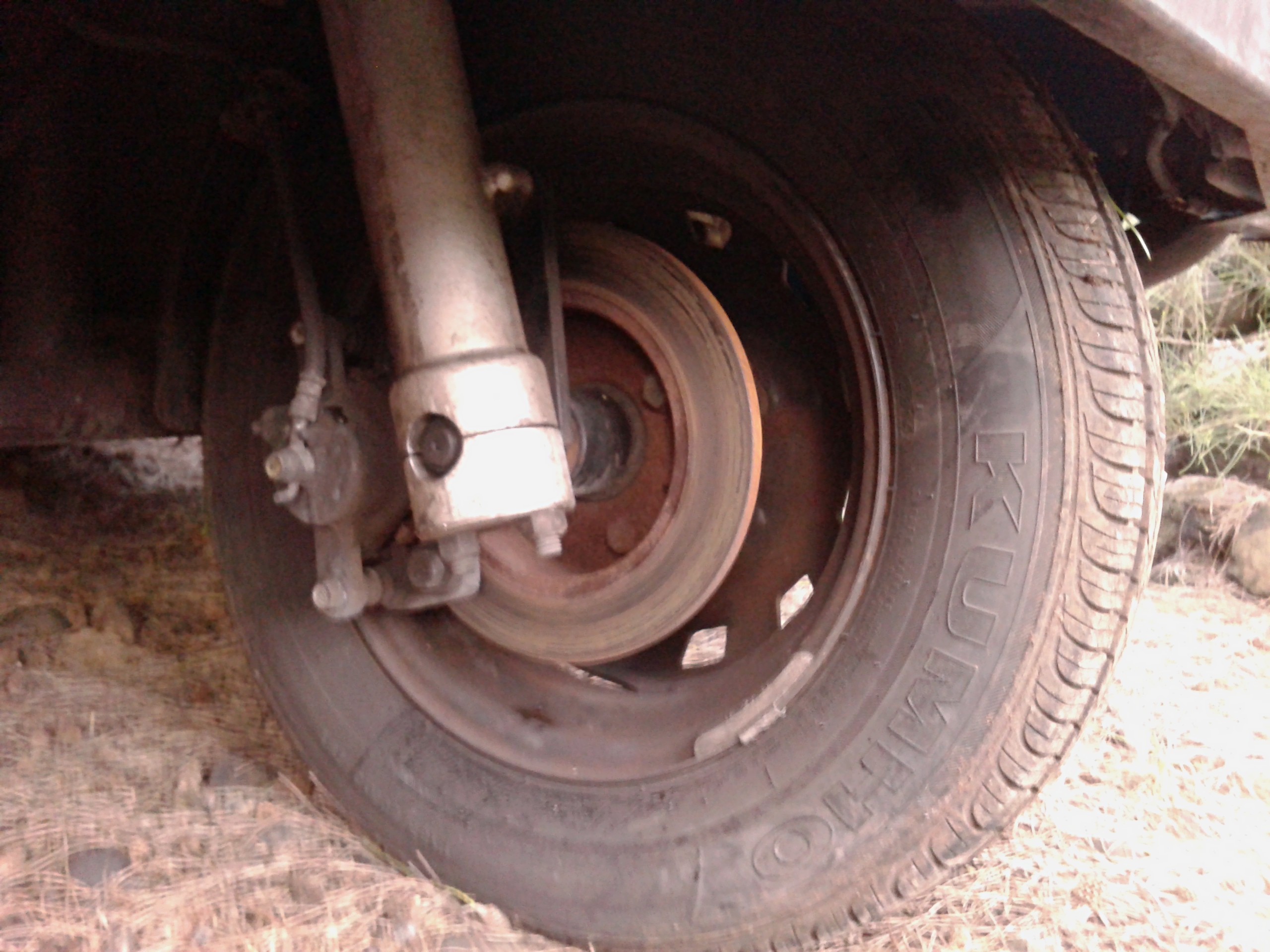Lia Raven Gerty
1 mW
Basic premise: Slap a hub motor on to the front a Westward Industries GO-4 Interceptor.
My experience: Back in 2011 I built an e-bike out of a tandem with a 9C kit from ebikes.ca and four lead-acid batteries. I've also done a lot of mechanical, fibreglass, and brazing work on motorcycles; and building the e-bike taught me enough electrical background to set up all the electrics of my off-grid cabin.
Goals: Cruise on electric power only up to 10 MPH to avoid waking up the neighbours, get more traction on muddy roads, prolong the life of the trike's obscure gas motor, and reduce fuel consumption by taking advantage of regenerative braking, solar power at home, and EV charging at school.
Why not a bike?: I'm sick and tired of being attacked by dogs everywhere I go. Recently I gained some new neighbours with some nasty dogs and they're making my life hell and I live waaaay out in the jungle where you can't count on law enforcement to help you. Also, my uncle's now too old to drive me around when I need to move things I can't carry on my Ruckus. Finally, I can convert the GO-4 into a van and sleep in the back if I have to!
Why a GO-4: It seems to be the cheapest thing I can get with less than 4 wheels and an enclosed cab. Also, the sliding doors, automatic transmission, and 70 MPH top speed are huge points over the much more expensive Piaggio Ape. Cushmans aren't made anymore which is concerning for parts availability. I've found and agreed to buy a GO-4 from a guy in California, just waiting for funds to clear before I get it shipped out here.
Budget: $4k for the motor, batteries, controller, etc.
Mechanical considerations: The stock front tyre is a 155/80-13. It doesn't look like I can go much bigger without new fork tubes, which would add $$$ no doubt. The vehicle has a GVWR of 2000 pounds, but only 675 of that is on the front axle.
Where I'm at:
AFAIK my options for a motorcycle-class hub motor are QSmotor, Golden Motor, and Enertrac. Golden Motors are either too large or too slow. QS motors look like they'll do the job, but I'm concerned about axle strength. Enertracs are too big as-is, but maybe I can work with them to get one made with a 13" rim? As for battery, since this is a hybrid I'm much less concerned about range than I am about safe charging and enough capacity to absorb regen currents. Finally, I really loved the Cycle Analyst my old e-bike had, and would love to incorporate one of those if it'll work with a big enough controller.
My experience: Back in 2011 I built an e-bike out of a tandem with a 9C kit from ebikes.ca and four lead-acid batteries. I've also done a lot of mechanical, fibreglass, and brazing work on motorcycles; and building the e-bike taught me enough electrical background to set up all the electrics of my off-grid cabin.
Goals: Cruise on electric power only up to 10 MPH to avoid waking up the neighbours, get more traction on muddy roads, prolong the life of the trike's obscure gas motor, and reduce fuel consumption by taking advantage of regenerative braking, solar power at home, and EV charging at school.
Why not a bike?: I'm sick and tired of being attacked by dogs everywhere I go. Recently I gained some new neighbours with some nasty dogs and they're making my life hell and I live waaaay out in the jungle where you can't count on law enforcement to help you. Also, my uncle's now too old to drive me around when I need to move things I can't carry on my Ruckus. Finally, I can convert the GO-4 into a van and sleep in the back if I have to!
Why a GO-4: It seems to be the cheapest thing I can get with less than 4 wheels and an enclosed cab. Also, the sliding doors, automatic transmission, and 70 MPH top speed are huge points over the much more expensive Piaggio Ape. Cushmans aren't made anymore which is concerning for parts availability. I've found and agreed to buy a GO-4 from a guy in California, just waiting for funds to clear before I get it shipped out here.
Budget: $4k for the motor, batteries, controller, etc.
Mechanical considerations: The stock front tyre is a 155/80-13. It doesn't look like I can go much bigger without new fork tubes, which would add $$$ no doubt. The vehicle has a GVWR of 2000 pounds, but only 675 of that is on the front axle.
Where I'm at:
AFAIK my options for a motorcycle-class hub motor are QSmotor, Golden Motor, and Enertrac. Golden Motors are either too large or too slow. QS motors look like they'll do the job, but I'm concerned about axle strength. Enertracs are too big as-is, but maybe I can work with them to get one made with a 13" rim? As for battery, since this is a hybrid I'm much less concerned about range than I am about safe charging and enough capacity to absorb regen currents. Finally, I really loved the Cycle Analyst my old e-bike had, and would love to incorporate one of those if it'll work with a big enough controller.



